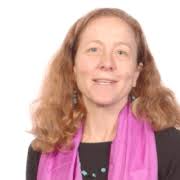A Map of American Peacebuilding
For the last few years, my colleagues at the Alliance for Peacebuilding and I have increasingly paid attention to peacebuilding challenges here in the United States. We are pleased to announce a first step in doing something about dangers we face at home with the publication of the first iteration of a map of American peacebuilding that we did under the leadership of Bridget Moix of Peace Direct.
Peace Direct.
The map and its underlying data can be found on Peace Direct’s Insights on Peace web site.
This was a huge step for AfP and Peace Direact. Initially, AfP was a coalition of U.S. based peacebuilding NGOs that worked abroad. Peace Direct has done remarkable work mapping and convening peacebuilders in the Global South.
In the light of all the turmoil and tension in the United States and Europe in the last few years, we both realized that we could not focus only on events in the Global South. I f nothing else, how can we claim to help people in Burundi or Bangladesh or Bolivia build peace there if we can’t do the same in Baltimore or Boston or Butte.
f nothing else, how can we claim to help people in Burundi or Bangladesh or Bolivia build peace there if we can’t do the same in Baltimore or Boston or Butte.
We know it is incomplete. Our research team (including my wife, more on her in the next paragraph) drew on a data base of American non-profits and used the categories Peace Direct uses in other countries to identify American peacebuilders. After assembling a list of nearly a thousand organizations we began reaching out to those organizations to see if they wanted to be included in our map.
We know we didn’t get them all. Right after we put the data base to bed, my wife and I had a visit from an old friend who is on the board of directors of New Hampshire Peace Action. They weren’t on our initial list. They are now.
Even with the first version of our map, we can see our way forward in two distinct ways, both of which need your help.
So, first, we found:
- An amazingly diverse set of grups work all across the United States. Few of them are nationally known like Code Pink or the YWCA. Most are local and deal with a wide variety of issues including race, immigration, justice, and more. And they do it in a wide variety of ways ranging from traditional social movement organization to using sports, music, and dance to build a more peaceful society. where they are located.
- An equally amazing diversity in what they mean by peacebuilding. Take Code Pink and the YWCA for instance. It’s rare that they end up in the same cluster of organizations.
- Most importantly of all, almost all of them (Code Pink and the YWCA again being exceptions) are locally based and are not likely to be taken to scale so that they can become springboards for effective action. That’s not a critique, because almost all of them were designed to harness local energies to solve local problems.
And second, what should organizations like AfP and Peace Direct do now that we have a preliminary snapshot of what’s going on? We talked about this at the first meeting our Domestic Peace Building working group last week. These three topics emerged from our discussion. But, read them and pay attention to the invitation that follows.
- Deepen our understanding of what is happening in a few regions, perhaps where our academic members and their students could do the kinds of conflict assessments we do outside of the US and use them to indicate fruitful thing the organizations we will continue identifying can take on.
- Create a national hub to gather and share information. If nothing else, they could share ideas that have worked in one locality that might also work in others. That hub could also work to build a national coalition to support peacebuilding efforts and adopt new peacebuilding-friendly public policies since polling we did over the summer suggests that the American electorate is likely to support such efforts.
- Double down our efforts to work with colleagues in other field to build broader coalitions like The State of American Democracy and the Bridge Alliance, both of which I’ve written about here.
There is plenty of work to do. We would love your input both in terms of telling us about people and organizations we missed and, more importantly, helping us decide how to use this information.
 Our working group is hoping to start some test projects in some of the places on our map that have either the most pressing issues or the largest cluster of peacebuilding groups. We also expect to feature domestic peacebuilding far more prominently at this year’s AfP annual conference which will be held in October.
Our working group is hoping to start some test projects in some of the places on our map that have either the most pressing issues or the largest cluster of peacebuilding groups. We also expect to feature domestic peacebuilding far more prominently at this year’s AfP annual conference which will be held in October.
And ours is not the only map. Communities in Transition has developed a map of professional mediators and others which is very different from ours which focuses on organizations that are big enough to have tax-free status as non-profits. Both approaches make sense, and I encourage you to look at this one as well as ours.
I also have been involved with an initiative of other peacebuilders who came together last June which I wrote about at the time. Its steering committee is meeting in early February to plan what it will do next.
The views and opinions expressed in this article are those of the author and do not necessarily reflect the official policy or position of the Alliance for Peacebuilding or its members.
Also published on Medium.





